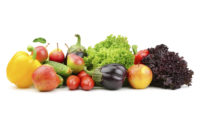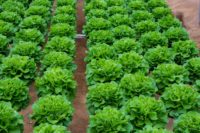American consumers in 2017 filled more of their grocery carts with organic, according to “2018 Organic Industry Survey,” released by the Organic Trade Association (OTA), Washington, D.C.
U.S. organic sales totaled a new record of $49.4 billion in 2017, up 6.4% from the previous year and reflecting new sales of nearly $3.5 billion. The organic food market hit $45.2 billion in sales, also breaking through to a new record for an increase of 6.4%.
The growth rate for organic food sales was below 2016's 9% pace and was impacted by markedly slow growth in the organic dairy and egg category. However, it was well above that of the overall food market, which nudged up 1.1%. Organic continued to increase its penetration into the total food market, and now accounts for 5.5% of the food sold in retail channels in the United States.
"Organic has arrived. And, everyone is paying attention," says Laura Batcha, executive director and CEO. "Our survey shows there are now certified-organic products in the marketplace representing all stages of the life cycle of a product or a company—from industry veterans to startups that are pioneering leading-edge innovation and benefits and getting shelf space for the first time. Consumers love organic, and now we're able to choose organic in practically every aisle in the store."
20 years with growth 15 times over
This year marks the 20th year of OTA’s survey. In 1997, organic food sales were pegged at $3.4 billion; 2017's sales of over $45 billion reflect a growth of nearly 15 times. In the last decade alone, the U.S. organic market has more than doubled in size, according to OTA’s studies.
To date, there are over 24,000 certified-organic operations nationwide serving an almost $50 billion market, whose annual growth rate regularly outpaces that of the total food market.
While the growth in organic sales slowed in 2017, some slowdown in what had been an on-fire growth pace was expected. The organic market is maturing and coming of age. New channel and product expansions are becoming more incremental rather than revolutionary.
"The organic food market will see a steadier pace of growth as it matures, but it will continue to surpass the growth rate of the broader food market," says Batcha. "Demand for organic is flourishing, as consumers seek out nutritious and clean food that is good for their health and for the environment. That demand is driving innovation, and there are now so many organic options that we can all eat organic for breakfast, lunch, dinner, snacks and everything in between."
Produce remains top organic category
Fruits and vegetables continued to be the largest organic food category, recording $16.5 billion in sales in 2017 on 5.3% growth. Fresh produce accounted for 90% of organic fruit and vegetable sales.
However, the organic dairy and egg category had one of its most challenging years in 2017. While still the second-largest selling organic category, sales of organic dairy and eggs grew just 0.9% to $6.5 billion. The slow growth in this key organic category acted as a drag on the growth of the overall industry.
Many producers have entered the organic dairy market over the last several years, attracted by the steady growth of the sector and the high returns for organic products. This new wave of supply, however, hit the market just as demand for organic dairy began to shift to more plant-based offerings, creating a situation of too much of a good thing. The oversupply of organic milk did have a silver lining for other dairy products. For instance, organic ice cream sales were up over 9% and organic cheese sales rose by almost 8%.
The organic egg market faced unique challenges. Pasture-raised eggs, which clearly delineate humane practices such as outdoor access, presented stiff competition for organic eggs in 2017. Consumers perceive organic as requiring a number of humane practices, including outdoor access for livestock and poultry. However, the requirements as written within current federal organic standards are unclear and inconsistently applied. This confusion and uncertainty dampended consumer demand for both organic eggs and organic dairy.
Beverages move to No. 3 slot
Consumers are drinking more, but that's not a bad thing. They're drinking more healthy organic beverages, especially fresh juices. Organic beverage sales rose 10.5% last year to $5.9 billion, making beverages the third-largest organic category, and a stand-out area of innovation and adaption of health trends. The driver in beverages was fresh juices for which sales jumped almost 25% to $1.2 billion and continued a multiyear double-digit growth streak. Non-dairy organic beverage alternatives in the form of almond, soy, coconut, rice and other blends also gained in popularity in 2017.
OTA surveyed 250 companies from Jan. 25-April 22, on behalf of OTA by Nutrition Business Journal (NBJ).




